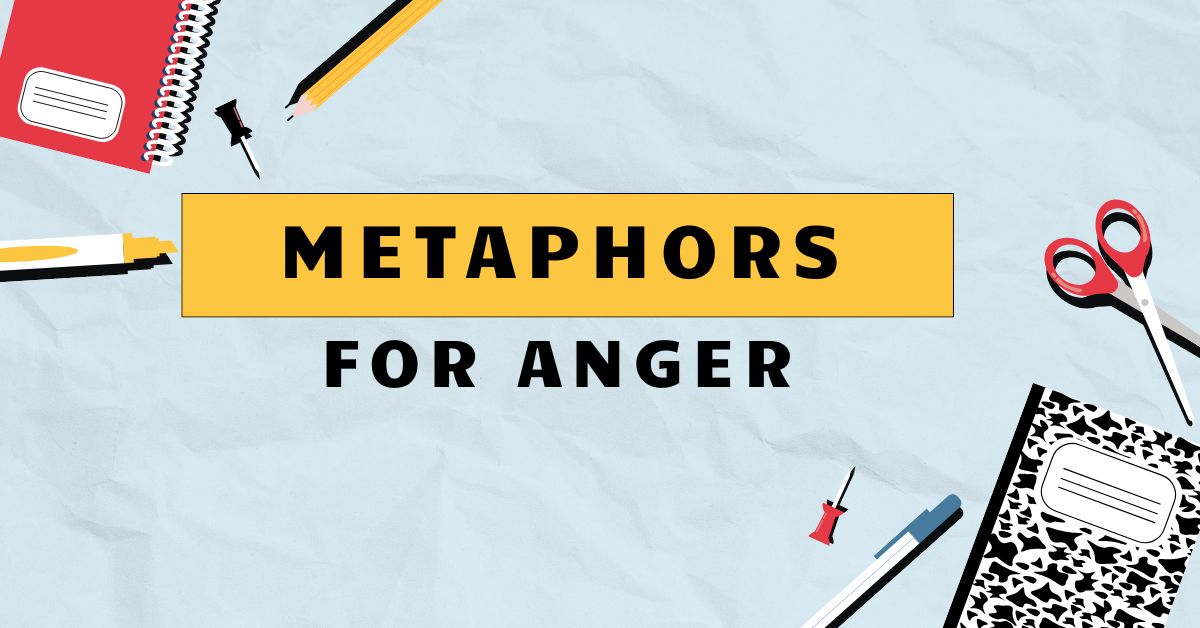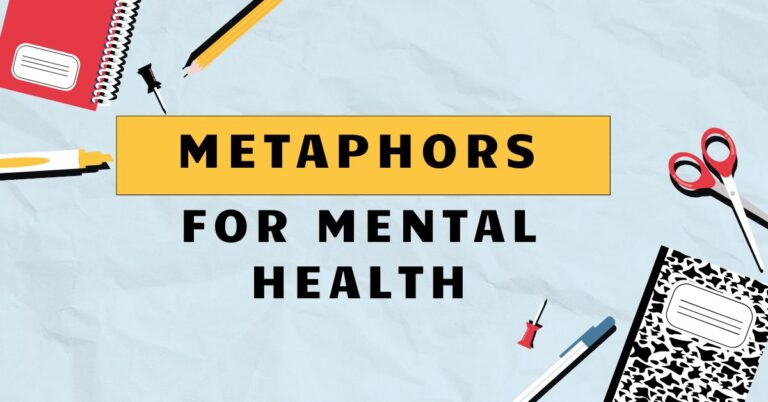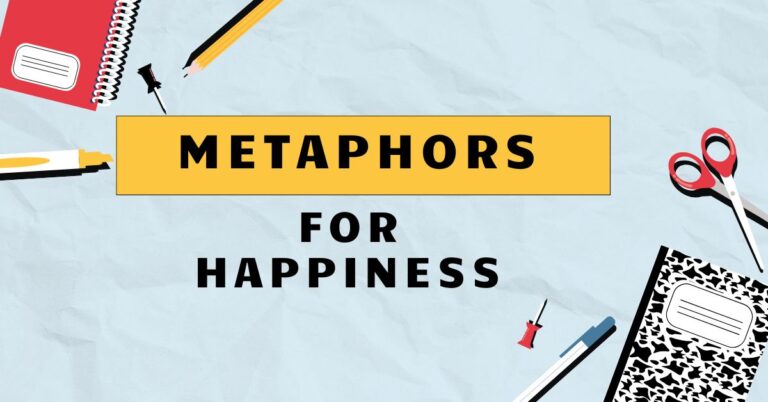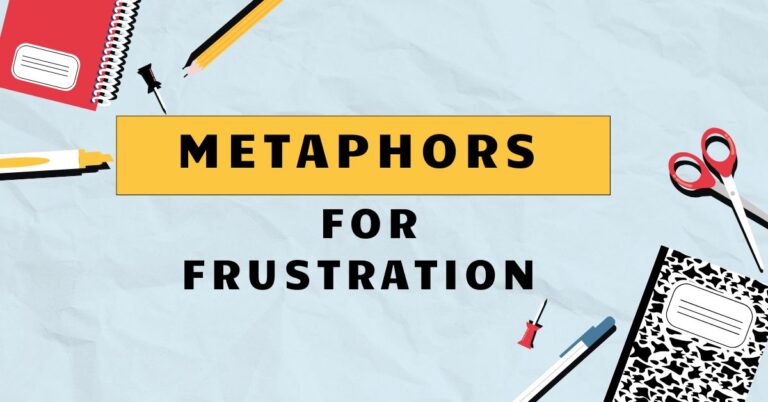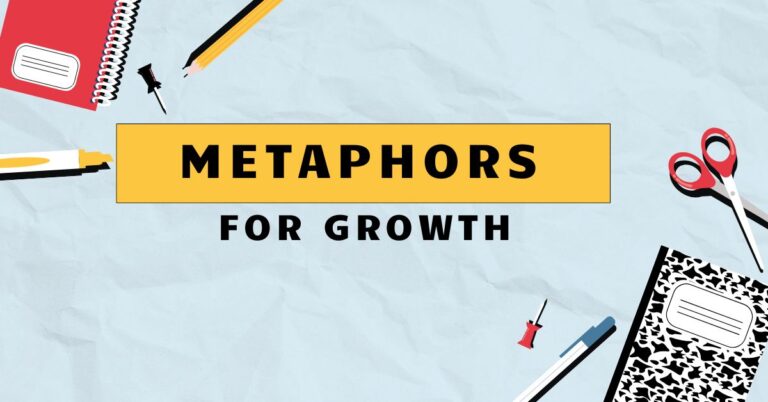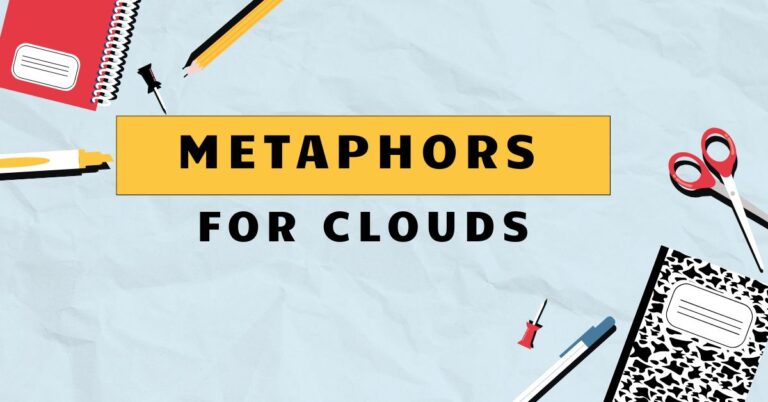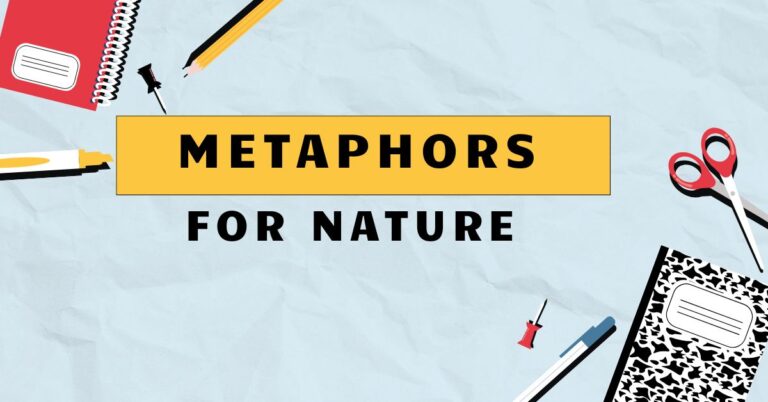31 Metaphors for Anger: Understanding Figurative Language
Understanding how we use metaphors to describe anger is crucial for effective communication and emotional intelligence. Metaphors allow us to express complex feelings in relatable terms, making our language more vivid and impactful.
This article explores the various types of metaphors used to convey anger, providing examples, usage rules, and practical exercises to enhance your understanding and application of this figurative language. Whether you’re an English language learner, a writer, or simply someone interested in improving your communication skills, this guide will help you master the art of using metaphors for anger.
Table of Contents
- Introduction
- Definition of Metaphor for Anger
- Structural Breakdown
- Types of Metaphors for Anger
- Examples of Metaphors for Anger
- Usage Rules
- Common Mistakes
- Practice Exercises
- Advanced Topics
- FAQ
- Conclusion
Definition of Metaphor for Anger
A metaphor for anger is a figure of speech that describes anger by comparing it to something else, without using “like” or “as.” It allows us to understand and express the abstract concept of anger in more concrete and relatable terms. Metaphors highlight specific qualities of anger, such as its intensity, destructiveness, or volatility, by associating it with something that shares those qualities.
This indirect comparison adds depth and emotional impact to our language. The effectiveness of a metaphor lies in its ability to create a vivid image or feeling in the listener’s mind, making the experience of anger more palpable and understandable.
By using metaphors, we can move beyond simple descriptions like “I’m angry” and convey the nuanced nature of our emotional state.
Metaphors for anger can be classified based on the type of imagery they evoke. For instance, some metaphors compare anger to fire, highlighting its burning and destructive nature.
Others use water imagery to describe anger as a flood or a storm, emphasizing its overwhelming and uncontrollable aspects. Animal metaphors often depict anger as a primal and instinctive response, while weather metaphors capture its unpredictable and turbulent qualities.
Understanding these different categories of metaphors allows us to choose the most appropriate and impactful way to express our anger or understand the anger of others. The function of these metaphors is not just descriptive but also communicative, helping to bridge the gap between internal feelings and external expression.
The context in which a metaphor for anger is used also significantly influences its interpretation. A metaphor used in a formal setting might be more subtle and restrained, while one used in casual conversation could be more direct and expressive.
Cultural background also plays a role, as certain metaphors may resonate more strongly with individuals from specific cultural groups due to shared experiences or beliefs. For example, a metaphor involving a volcano might be particularly impactful in a region prone to volcanic activity.
Therefore, effective use of metaphors requires not only an understanding of their literal meaning but also an awareness of their cultural and contextual implications. This sensitivity ensures that the intended message is accurately conveyed and received.
Structural Breakdown
The basic structure of a metaphor involves two main components: thetenorand thevehicle. The tenor is the subject being described (in this case, anger), and the vehicle is the object or concept to which it is being compared.
The connection between the tenor and the vehicle is what creates the metaphorical meaning. For example, in the metaphor “He was boiling with rage,” the tenor is the person’s anger, and the vehicle is the act of boiling.
The shared quality is the intense heat and agitation associated with both boiling water and extreme anger.
Understanding the relationship between the tenor and the vehicle is crucial for interpreting and creating effective metaphors. A strong metaphor makes a clear and compelling connection between the two, highlighting the relevant shared qualities.
The more unexpected or imaginative the connection, the more impactful the metaphor is likely to be. However, the connection must also be plausible and understandable to the audience.
A metaphor that is too obscure or far-fetched may fail to communicate the intended meaning. Therefore, careful consideration should be given to the choice of vehicle and its relevance to the tenor.
Metaphors can also be extended, meaning that the comparison is developed over several sentences or even paragraphs. An extended metaphor allows for a more detailed and nuanced exploration of the relationship between the tenor and the vehicle.
This can be particularly effective in writing, where it can create a richer and more immersive experience for the reader. For example, instead of simply saying “Her anger was a storm,” one could extend the metaphor by describing the gathering clouds, the brewing wind, and the eventual downpour of her rage.
This extended description provides a more vivid and compelling portrayal of her emotional state. The success of an extended metaphor depends on maintaining consistency and coherence throughout the comparison.
Types of Metaphors for Anger
Metaphors for anger can be categorized into several types based on the imagery they evoke. These categories help to understand the different ways in which anger can be conceptualized and expressed.
Fire Metaphors
Fire metaphors are among the most common ways to describe anger. They emphasize the burning, destructive, and uncontrollable nature of intense anger.
These metaphors often involve terms like “burning,” “fiery,” “blazing,” and “smoldering.” They convey the idea that anger can consume and destroy everything in its path, much like a fire. The intensity of the fire often reflects the intensity of the anger being described.
Water Metaphors
Water metaphors represent anger as something overwhelming and potentially destructive, like a flood or a storm. These metaphors often use terms like “boiling,” “seething,” “overflowing,” and “drowning.” They suggest that anger can build up gradually until it reaches a breaking point, at which point it can unleash with tremendous force.
The uncontrollable nature of water mirrors the feeling of being overwhelmed by anger.
Animal Metaphors
Animal metaphors depict anger as a primal and instinctive response. These metaphors often compare angry individuals to ferocious animals like lions, tigers, or bears.
They emphasize the raw power and aggression associated with anger. Terms like “growling,” “snarling,” “pouncing,” and “lashing out” are commonly used in these metaphors.
The choice of animal often reflects the specific qualities of anger being highlighted.
Weather Metaphors
Weather metaphors capture the unpredictable and turbulent qualities of anger. These metaphors often compare anger to storms, hurricanes, or tornadoes.
They emphasize the sudden and destructive nature of angry outbursts. Terms like “storming,” “raging,” “thundering,” and “clouding over” are frequently used.
The severity of the weather often reflects the intensity of the anger being described.
Pressure Metaphors
Pressure metaphors describe anger as a buildup of internal pressure that eventually explodes. These metaphors often use terms like “bottled up,” “simmering,” “ready to burst,” and “under pressure.” They convey the idea that suppressing anger can lead to an even more intense outburst.
The feeling of being under pressure mirrors the internal tension associated with suppressed anger.
Examples of Metaphors for Anger
Here are some examples of metaphors for anger, organized by category.
Fire Metaphor Examples
The following table provides examples of fire metaphors used to describe anger. Each example illustrates how anger can be compared to fire to convey its intensity and destructiveness.
| Metaphor | Explanation |
|---|---|
| His anger was a burning inferno. | Compares anger to a large, uncontrolled fire, emphasizing its intensity. |
| She was fiery with rage. | Describes the person as being filled with intense, burning anger. |
| His eyes blazed with fury. | Suggests that his anger was visible and intense, like flames. |
| Her words were like scorching flames. | Implies that her words were hurtful and destructive, like fire. |
| He was smoldering with resentment. | Indicates a suppressed anger that is slowly building up. |
| The insult ignited his temper. | Suggests that the insult triggered a sudden and intense outburst of anger. |
| Her anger was a wildfire, consuming everything in its path. | Compares anger to a rapidly spreading fire, emphasizing its destructiveness. |
| He felt the heat of his anger rising. | Describes the physical sensation of anger as a burning heat. |
| Her anger was a controlled burn, carefully managed. | Suggests that she was consciously managing her anger. |
| The situation was a tinderbox, ready to explode with anger. | Compares the situation to something highly flammable, suggesting it could easily trigger anger. |
| His patience burned out quickly. | Indicates that his patience was exhausted by anger. |
| She was incandescent with rage. | Describes her as glowing with intense anger. |
| His anger flared up unexpectedly. | Suggests a sudden and intense outburst of anger. |
| The argument fueled his anger. | Implies that the argument intensified his anger. |
| He was consumed by his anger. | Indicates that his anger completely dominated his thoughts and actions. |
| His words were red-hot with anger. | Suggests that his words were filled with intense anger. |
| Her anger was a furnace, burning inside her. | Compares her anger to a hot and intense furnace. |
| He fumed with anger. | Describes him as being filled with anger. |
| His anger was an ember, glowing faintly but still hot. | Describes a lingering, underlying anger. |
| She kindled with rage. | Suggests that her anger was starting to grow. |
| His anger was a bonfire, impossible to ignore. | Compares his anger to a large, visible fire. |
| Her anger was like molten lava. | Implies a slow-burning, intense anger. |
| He charred his relationships with his anger. | Suggests his anger damaged his relationships. |
| The news set him ablaze with fury. | Indicates that the news triggered an intense outburst of anger. |
Water Metaphor Examples
The following table provides examples of water metaphors used to describe anger. These metaphors often emphasize the overwhelming and uncontrollable nature of anger.
| Metaphor | Explanation |
|---|---|
| He was boiling with rage. | Compares anger to boiling water, emphasizing its intensity and agitation. |
| She was seething with anger. | Suggests a suppressed anger that is slowly building up. |
| His anger overflowed. | Indicates that his anger reached a breaking point and was released. |
| He was drowning in his own anger. | Implies that he was overwhelmed and consumed by his anger. |
| Her anger was a flood of emotions. | Compares anger to a large, overwhelming amount of water. |
| His temper was a tidal wave. | Suggests that his anger was powerful and destructive, like a large wave. |
| She was awash with fury. | Describes her as being completely filled with anger. |
| His anger was a raging river. | Compares anger to a fast-flowing, powerful river. |
| Her anger was a torrent of words. | Suggests that her words were flowing rapidly and forcefully. |
| He unleashed a storm of anger. | Indicates a sudden and intense outburst of anger. |
| Her anger surged through her veins. | Describes the physical sensation of anger as a powerful flow. |
| He was submerged in his own anger. | Implies that he was completely immersed in his anger. |
| Her anger was a deep sea of resentment. | Compares anger to a vast and unexplored ocean, emphasizing its depth. |
| His anger bubbled to the surface. | Suggests that his anger was starting to become visible. |
| She felt a wave of anger wash over her. | Describes a sudden and intense feeling of anger. |
| His anger was a tsunami of destruction. | Compares anger to a large and destructive wave. |
| He wallowed in his anger. | Implies that he was indulging in his anger. |
| Her anger was a whirlpool, sucking her in. | Compares her anger to something that is pulling her down. |
| His anger was a reservoir, slowly filling up. | Suggests that his anger was gradually accumulating. |
| She spilled her anger onto him. | Indicates that she released her anger towards him. |
| His anger was a dam about to break. | Implies that his anger was building up and would soon explode. |
| Her anger was like a geyser, erupting suddenly. | Suggests a sudden and forceful outburst of anger. |
| He soaked in his anger. | Implies that he was immersed in his anger. |
| The argument stirred up his anger. | Indicates that the argument provoked his anger. |
Animal Metaphor Examples
The following table provides examples of animal metaphors used to describe anger. These metaphors often emphasize the raw power and aggression associated with anger.
| Metaphor | Explanation |
|---|---|
| He roared with anger. | Compares his angry outburst to the loud roar of a lion. |
| She snapped at him. | Suggests a sudden and aggressive verbal attack. |
| He was growling with frustration. | Indicates a low, rumbling expression of anger. |
| She hissed her disapproval. | Compares her expression of disapproval to the hissing of a snake. |
| He pounced on the opportunity to criticize. | Suggests that he seized the opportunity to criticize with aggression. |
| She was a cornered lion, ready to strike. | Compares her to a dangerous animal defending itself. |
| He bared his teeth in anger. | Suggests a visible display of aggression. |
| She was like a viper, ready to strike. | Compares her to a venomous snake, emphasizing her dangerousness. |
| He charged at the problem. | Suggests that he approached the problem with aggression and force. |
| She was as fierce as a tiger. | Compares her to a powerful and aggressive animal. |
| He clawed his way to the top. | Suggests that he achieved success through aggression and ruthless behavior. |
| She was like a bear with a sore head. | Compares her to an irritable and grumpy animal. |
| He snarled at the suggestion. | Indicates a hostile and aggressive rejection of the suggestion. |
| She was as mad as a hornet. | Compares her to an easily angered and aggressive insect. |
| He lashed out in anger. | Suggests a sudden and violent outburst of anger. |
| She was like a hawk, watching for any mistake. | Compares her to a predatory bird, emphasizing her vigilance and critical nature. |
| He stalked away in anger. | Suggests that he moved with a menacing and deliberate manner. |
| She was as stubborn as a mule. | Compares her to a stubborn and unyielding animal. |
| He barked his orders. | Indicates that he gave orders in a loud and aggressive manner. |
| She was like a caged animal, pacing restlessly. | Compares her to an animal trapped and agitated. |
| He preyed on their vulnerabilities. | Suggests that he exploited their weaknesses with malicious intent. |
| She was as sly as a fox. | Compares her to a cunning and deceitful animal. |
| He dogged their every move. | Suggests that he followed them persistently and relentlessly. |
| She was like a wolf in sheep’s clothing. | Compares her to someone who appears harmless but is actually dangerous. |
Weather Metaphor Examples
The following table provides examples of weather metaphors used to describe anger. These metaphors often emphasize the unpredictable and turbulent qualities of anger.
| Metaphor | Explanation |
|---|---|
| He was storming with anger. | Compares his anger to a violent storm. |
| She was raging like a hurricane. | Suggests that her anger was intense and destructive. |
| His anger was a thunderstorm. | Compares his anger to a sudden and violent storm with thunder and lightning. |
| She was clouding over with anger. | Indicates that her anger was starting to become visible. |
| His anger was a tornado of destruction. | Compares his anger to a powerful and destructive whirlwind. |
| She was under a cloud of anger. | Suggests that she was feeling overshadowed by anger. |
| His anger was a blizzard of insults. | Compares his insults to a heavy and overwhelming snowstorm. |
| She was in the eye of the storm of her anger. | Suggests a brief moment of calm amidst intense anger. |
| His anger was a heatwave of fury. | Compares his anger to intense and oppressive heat. |
| She was snowed under with anger. | Suggests that she was overwhelmed by anger. |
| His anger was a drought of patience. | Compares his lack of patience to a prolonged period of dryness. |
| She was weathering the storm of his anger. | Suggests that she was enduring his anger. |
| His anger was a whirlwind of emotions. | Compares his anger to a chaotic and swirling vortex. |
| She was foggy with anger. | Indicates that her thinking was unclear due to anger. |
| His anger was a monsoon of tears. | Compares his tears to heavy and persistent rain. |
| She was frozen with anger. | Suggests that she was paralyzed by anger. |
| His anger was a lightning strike of rage. | Compares his anger to a sudden and intense flash of lightning. |
| She was a force of nature when angry. | Suggests that her anger was powerful and uncontrollable. |
| His anger was a downpour of criticism. | Compares his criticism to a heavy and relentless rain. |
| She was as cold as ice with anger. | Implies a lack of emotion and a sense of distance. |
| His anger was gathering like clouds. | Suggests a gradual buildup of anger. |
| She was blown away by his anger. | Indicates that she was overwhelmed by his anger. |
| His anger was a mist of resentment. | Compares his resentment to a subtle and pervasive fog. |
| She was blinded by her anger. | Suggests that her anger impaired her judgment. |
Pressure Metaphor Examples
The following table provides examples of pressure metaphors used to describe anger. These metaphors often emphasize the buildup of internal pressure that eventually explodes.
| Metaphor | Explanation |
|---|---|
| He had bottled up his anger for too long. | Suggests that he had been suppressing his anger. |
| She was simmering with resentment. | Indicates a suppressed anger that is slowly building up. |
| He was ready to burst with anger. | Implies that he was about to explode with anger. |
| She was under pressure to control her anger. | Suggests that she was feeling stressed and strained to manage her anger. |
| His anger was a pressure cooker about to explode. | Compares his anger to a sealed container that is about to burst. |
| She was at the breaking point of her patience. | Suggests that she was about to lose control of her anger. |
| His anger had been building up for weeks. | Indicates that his anger had been accumulating gradually. |
| She was on the verge of losing her temper. | Suggests that she was very close to becoming angry. |
| His anger was a time bomb waiting to explode. | Compares his anger to a hidden threat that is about to detonate. |
| She was feeling the strain of holding back her anger. | Suggests that she was experiencing the physical and emotional effects of suppressing her anger. |
| His anger was a tightly wound spring. | Compares his anger to something that is coiled and ready to release energy. |
| She was at her wit’s end with anger. | Suggests that she had exhausted all her resources for managing her anger. |
| His anger was a volcano about to erupt. | Compares his anger to a geological feature that is about to explode. |
| She was at the boiling point of her anger. | Suggests that she was about to explode with anger. |
| His anger was a corked bottle ready to pop. | Compares his anger to a sealed container that is about to burst open. |
| She was on a short fuse with anger. | Suggests that she was easily triggered into anger. |
| His anger was reaching critical mass. | Compares his anger to a nuclear reaction that is about to become self-sustaining. |
| She was under immense pressure to stay calm. | Suggests that she was feeling a great deal of stress to control her anger. |
| His anger was a geyser ready to erupt. | Compares his anger to a hot spring that is about to burst forth. |
| She was at the limit of her tolerance. | Suggests that she had reached the maximum level of anger she could endure. |
| His anger was a powder keg ready to ignite. | Compares his anger to a container of explosive material that is about to explode. |
| She was on the edge of losing control. | Suggests that she was very close to becoming overwhelmed by her anger. |
| His anger was building up steam. | Implies a gradual increase in anger. |
| She was wound up tight with anger. | Suggests intense tension and suppressed anger. |
Usage Rules
When using metaphors for anger, it’s important to follow certain rules to ensure clarity and effectiveness. First, ensure that the metaphor isappropriatefor the context.
A highly dramatic metaphor might be suitable for a novel but inappropriate for a business presentation. Second, maintainconsistencywithin the metaphor.
If you start by comparing anger to a fire, avoid switching to a water metaphor mid-sentence. Third, beoriginal.
Overused metaphors can lose their impact, so try to find fresh and creative ways to express anger. Fourth, consider youraudience.
A metaphor that resonates with one audience might not work for another due to cultural or experiential differences. Finally, avoidmixed metaphors, which combine unrelated images and create confusion.
For example, “He was a volcano of boiling rage” mixes fire and water imagery and is less effective than “He was a volcano of rage.”
Another crucial aspect of using metaphors effectively is understanding theconnotationsof the chosen vehicle. Different metaphors evoke different associations and emotions.
For example, comparing anger to a “wildfire” suggests that it is destructive and uncontrollable, while comparing it to a “controlled burn” implies that it is carefully managed. The choice of metaphor should reflect the specific qualities of anger that you want to emphasize.
It’s also important to be aware of the potential formisinterpretation. A metaphor that is clear to you might not be clear to everyone else.
Providing context or explanation can help to ensure that your message is accurately understood. Additionally, consider thetoneof the metaphor.
A humorous metaphor might be appropriate in some situations, but it could be offensive or insensitive in others.
Furthermore, be mindful of theintensityof the metaphor. Using an overly strong metaphor can sometimes diminish the impact of the message, especially if the situation doesn’t warrant such a dramatic comparison.
For example, describing a minor disagreement as a “nuclear explosion” would be an exaggeration. It’s also important to avoid using metaphors that areclichédor overused.
Phrases like “seeing red” or “blowing a fuse” have become so common that they often lack impact. Instead, strive to find more original and imaginative ways to express anger.
Finally, remember that the goal of using metaphors is to enhance communication, not to obscure it. If a metaphor is confusing or distracting, it’s better to avoid it altogether.
Effective metaphors should add depth, color, and emotional resonance to your language, making it more engaging and memorable.
Common Mistakes
One common mistake is usingmixed metaphors. For example, saying “He was a volcano of boiling rage” combines fire and water imagery, creating a confusing and ineffective metaphor.
The correct way would be to stick to one type of imagery, such as “He was a volcano of rage” or “He was boiling with rage.” Another common error is usingclichéd metaphors. Overused phrases like “seeing red” or “blowing a fuse” have lost their impact and can make your writing sound unoriginal.
Instead, try to come up with fresh and creative metaphors that will capture the reader’s attention.
Another frequent mistake is using metaphors that aretoo abstractor difficult to understand. A good metaphor should make a clear and compelling connection between the tenor and the vehicle.
If the connection is too obscure, the reader may not be able to grasp the intended meaning. For example, comparing anger to a “fractal pattern” might be confusing to someone who is not familiar with mathematical concepts.
It’s also important to avoid using metaphors that areinconsistentwith the context. For example, using a gentle or calming metaphor to describe intense anger would be inappropriate.
The metaphor should accurately reflect the intensity and nature of the anger being described.
Finally, some people make the mistake ofoverusing metaphors. While metaphors can add color and depth to your writing, using too many of them can make it sound cluttered and artificial.
It’s important to use metaphors judiciously and only when they truly enhance the message. Also, be careful not to confuse metaphors withsimiles.
A simile uses “like” or “as” to make a comparison, while a metaphor directly equates two things. For example, “He was as angry as a bear” is a simile, while “He was a bear” is a metaphor.
Understanding the difference between these two figures of speech is crucial for using them correctly.
| Incorrect | Correct | Explanation |
|---|---|---|
| He was a volcano of boiling rage. | He was a volcano of rage. | Avoid mixing fire and water imagery. |
| She was seeing red with anger. | Her anger was a wildfire. | Avoid clichéd metaphors. |
| His anger was like a fractal pattern. | His anger was a tangled web. | Use metaphors that are easy to understand. |
| She was as calm as a storm. | She was raging like a storm. | Ensure the metaphor is consistent with the context. |
| He was drowning in a sea of fire. | He was drowning in his anger. | Avoid overusing metaphors. |
Practice Exercises
Here are some practice exercises to help you improve your understanding and use of metaphors for anger.
- Exercise 1: Identify the Metaphor
Identify the metaphor in each sentence and explain what it means.
| Question | Answer |
|---|---|
| 1. His anger was a ticking time bomb. | The metaphor is “ticking time bomb.” It means his anger was building up and about to explode. |
| 2. She was boiling with rage. | The metaphor is “boiling.” It means she was extremely angry and agitated. |
| 3. He unleashed a storm of anger. |

